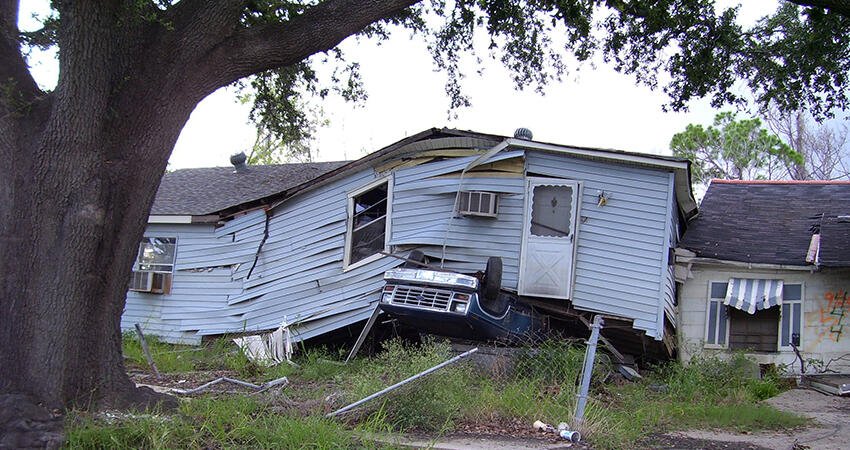
(Marin James/Shutterstock)
Federal Resources to Mitigate Natural Disasters Aren’t Equitably Distributed
- Title:
-
Naturally Resilient to Natural Hazards? Urban-Rural Disparities in Hazard Mitigation Grant Program Assistance
- Author:
-
Kijin Seong, Clare Losey, Donghwan Gu
- Source:
- Publication Date:
-
2021
When natural disasters hit, residents may be forced to relocate or rebuild. The Hazard Mitigation Grant Program (HMGP) is a Federal Emergency Management Agency (FEMA) effort that provides funds for communities to alleviate natural disaster losses. This study explored differences in the distribution and duration of HMGP assistance, finding inequities between urban and rural counties, among other disparities.
The authors used National Oceanic and Atmospheric Administration, American Community Survey and open FEMA data to analyze the amount of HMGP assistance awarded per recipient in urban and rural counties, as well as the duration of HMGP projects from 1989 to 2018. In that period, 46,152 properties were mitigated through the five FEMA programs that provide Hazard Mitigation Assistance. They limited their analysis to just the 39,261 properties that received HGMP, were affected by hydrological disasters, and were local in the US. Their model used a subset of the total records with complete data. The authors made statistical models which yielded implications for planning and policy discussions.
Key findings
- HMGP recipients in rural areas received less assistance (about 5.7 percent less on average) than those in urban areas.
- Areas with higher population densities and higher median home values (which tend to be in urban areas) received more HMGP assistance awarded.
- Communities that prioritized acquisition or relocation in their mitigation strategies received more HMGP funds than communities that prioritized staying in place.
- Multifamily properties received more assistance per property than mobile homes and vacant land, underscoring the urban-rural disparity.
- Properties significantly damaged or destroyed by disasters saw 16.3 percent less HMGP assistance per recipient than those with minor damages.
- Even though wealthier, predominantly white communities are more likely to have resources for hazard mitigation, the study found that HMGP assistance increased as a county’s white population increased.
- Regionally, the Great Plains states (Iowa, Kansas, Missouri, and Nebraska) received smaller amounts of HMGP assistance than states in the Northeast (New Jersey and New York).
- Projects in communities with fewer hazard mitigation resources, in both rural and urban counties, lasted longer than those with greater protection from disaster-related stressors. This has possible implications for a lack of transparency, inclusivity, and oversight within the planning and implementation processes.
Policy implications
- The authors suggest policy approaches to funding disaster mitigation should be tailored to local contexts to best target communities most in need. Increased flexibility in the mitigation process, including equitably prioritizing grant application and working with less-resourced counties, can help address inequitable distribution of federal funds.
- The authors recommend the current structure of the HMGP should be examined and changed to increase fairness within the distribution process and support rural counties as social vulnerability and the need for hazard mitigation grow.


